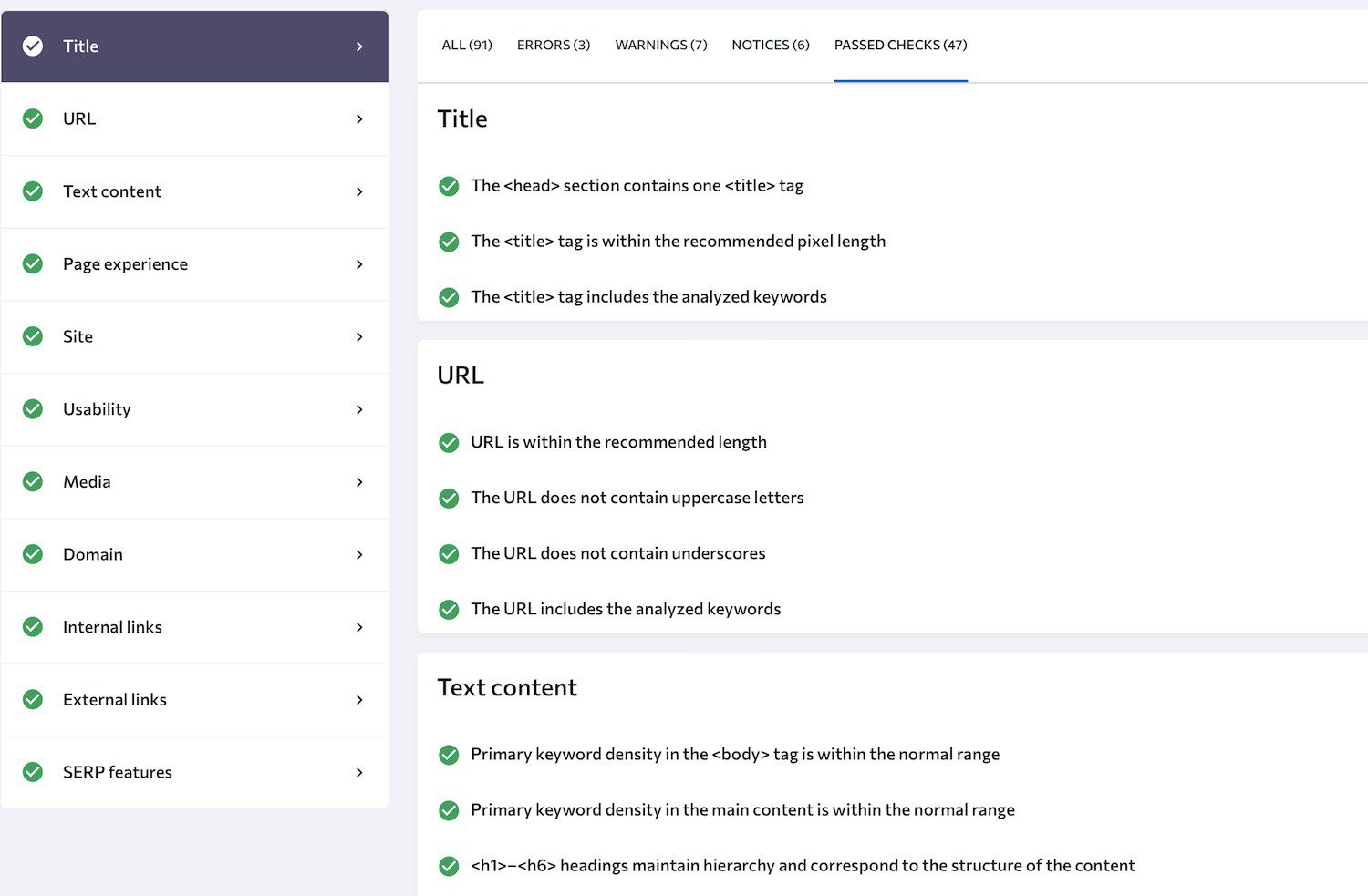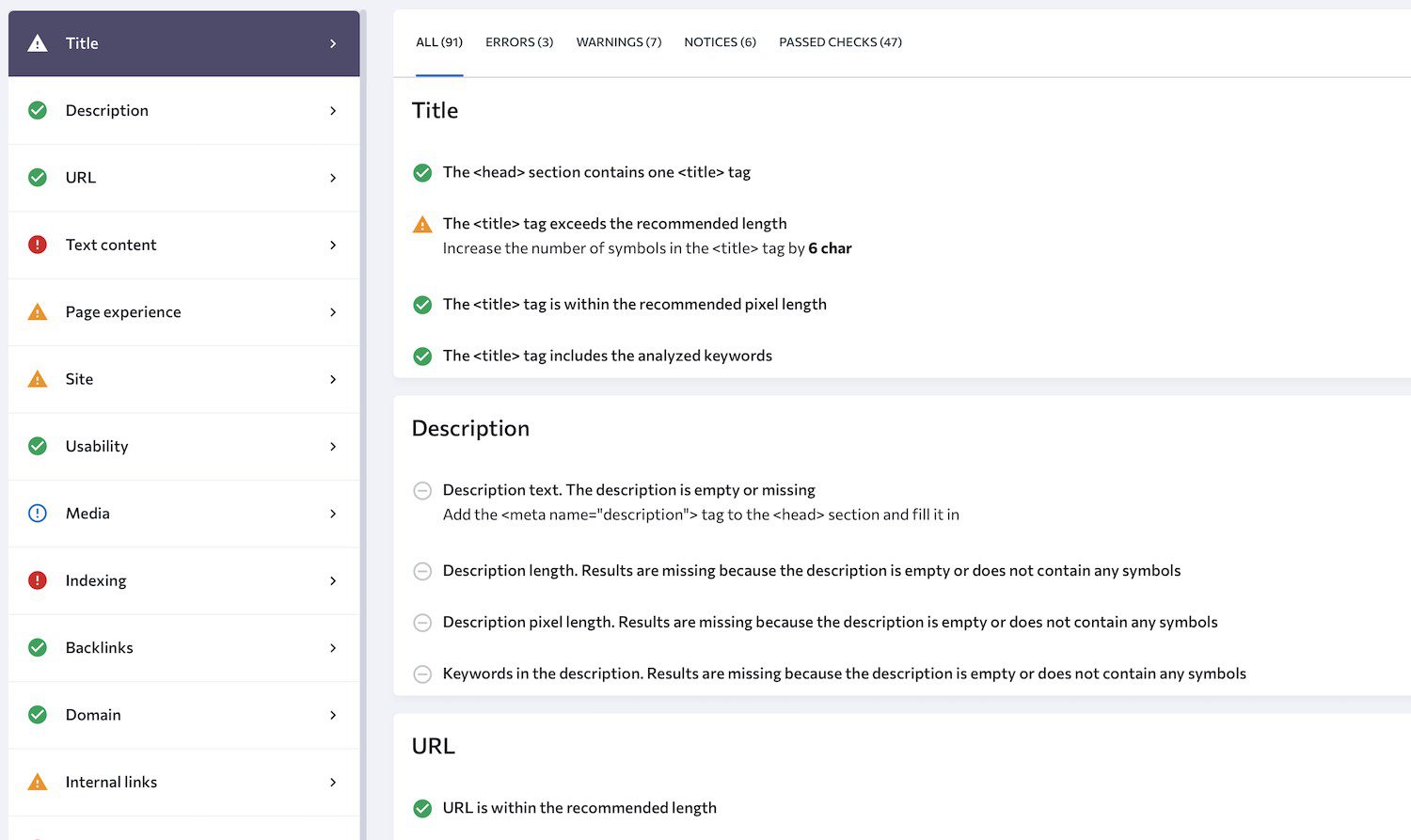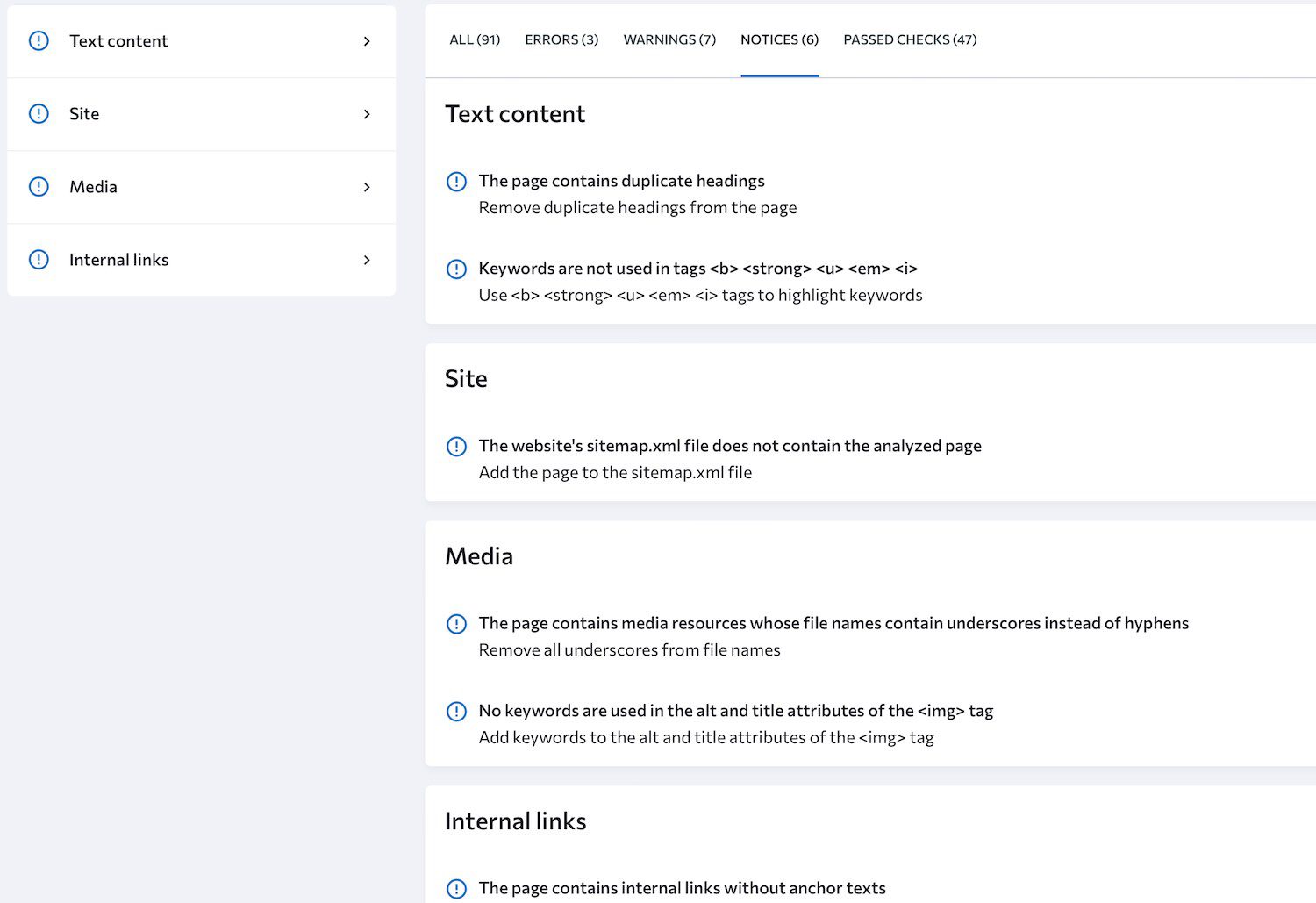Run your FREE SEO audit today!
You already have a website and an online presence BUT did you know that just having a website isn’t enough these days? Take your search engine optimization efforts to the next level with our free keyword audit tool. Click on the button “Run the free on-page SEO audit now”. After filling in the form, you will be emailed a deep and detailed report on how well your page is optimized for a certain search query. Want to learn more after that? Take a look at our SEO blog post “Top Tips to Build Your Business SEO Strategy“. Contact us for more information about working with Reinhardt Designs to improve your online search engine optimization. Run your free SEO Audit today and get started building a trusted online presence for your company.
Curious about how google search console works and what insights the data might have for you and your business? A comprehensive SEO audit can help to unlock some of this data and make sure you understand what is important. If you aren’t linked to google search console now is the time to consider checking. Let us know if we can help.
Our free SEO audit service can get you started on the right track. Our SEO website scan provides you with a detailed report on the technical health of a web page in exchange for your email. This free SEO audit tool will check how well your website page is optimized for its targeted keyword. You will get information on every crucial issue that might be affecting your rankings with search engines, like Google. We will also provide relevant SEO fixes & next step recommendations. Get you SEO audit report today! It should show as an auto popup on the screen. If it doesn’t just reload the page.

A little bit more about what an On-Page SEO Audit is and why it is important
An on-page SEO audit, often referred to simply as an “on-page audit,” is a process of evaluating and analyzing an individual web page of a website to assess it’s optimization for search engines. The primary goal of an on-page audit is to ensure that a website page is well-structured, contains high-quality content, and is optimized to rank well in search engine results for a specific keyword.
We partner with SE Ranking to run our on-page SEO audits. One thing that is tested is the page quality score. The Page Quality Score is a metric that assesses the quality of an individual web page on your website. This score is typically based on various on-page SEO factors, content quality, technical aspects, and other criteria that search engines consider when ranking web pages. While the exact factors used to calculate this score may not be publicly disclosed by SE Ranking, they usually include elements such as:
- On-Page SEO: This involves evaluating factors like meta tags, header tags, keyword usage, and internal linking.
- Content Quality: The quality, uniqueness, and relevance of the content on the page are important factors.
- Technical SEO: Factors like page load speed, mobile-friendliness, and proper HTML coding may also be considered.
- Backlinks: The quality and quantity of inbound links pointing to the page may influence the score.
- User Experience: Aspects such as user engagement, bounce rate, and other user behavior metrics may be included.
- Structured Data: The use of structured data (schema markup) to provide additional information to search engines.
Our SEO audit will also list your top competitors for a specific keyword. Listing competitors for a specific keyword as part of an on-page SEO audit can be very helpful for several reasons:
- Benchmarking: Identifying who your competitors are for a particular keyword allows you to benchmark your website’s performance against theirs. This can give you a clear picture of where you stand in relation to other websites targeting the same keyword.
- Gap Analysis: By analyzing your competitors, you can identify gaps or weaknesses in your own content or SEO strategy. You can see what your competitors are doing well and where you may be falling short, allowing you to make improvements accordingly.
- Keyword Targeting: Understanding your competitors for a keyword helps you assess the competitiveness of that keyword. If you’re up against well-established and authoritative websites, it may be more challenging to rank highly for that keyword, and you may need to adjust your SEO strategy accordingly.
- Content Inspiration: Reviewing the content of your competitors can provide inspiration for your own content. You can see what types of content they are producing, what topics they cover, and how they structure their pages. This can help you create better, more informative, and engaging content.
- Backlink Analysis: Analyzing your competitors can also reveal their backlink profiles. You can see which websites are linking to them, which can provide opportunities for you to build similar backlinks and improve your site’s authority.
- SERP Features: Knowing your competitors for a keyword can help you understand the search engine results page (SERP) features for that keyword. Some keywords may trigger featured snippets, knowledge graphs, or other SERP features. Understanding this can guide your content strategy to target these features.
- Strategy Alignment: Identifying your competitors and their strategies can help you align your own SEO and content strategy to be more competitive in the marketplace. You can adjust your content, on-page optimization, and marketing efforts accordingly.
- Traffic Insights: Analyzing your competitors can also provide insights into the potential traffic and visibility for a specific keyword. You can estimate the search volume and user intent for that keyword, helping you prioritize your efforts.
Here are the key components of an on-page SEO audit:
- Keyword Analysis: Identifying the target keywords for each web page and ensuring that they are relevant to the content and the target audience. Keyword research helps in determining which terms or phrases users are searching for.
- Title Tags: Reviewing and optimizing the title tags of each page to include relevant keywords and provide a clear and concise description of the page’s content.
- Meta Descriptions: Ensuring that meta descriptions are well-written, informative, and contain keywords to encourage click-through from search engine results pages (SERPs).
- Header Tags (H1, H2, etc.): Checking the usage of header tags to create a hierarchy of information and make the content more scannable and user-friendly. Optimizing headers with relevant keywords can also improve SEO.
- Content Quality: Assessing the quality of the content on each page. Content should be well-written, relevant, and informative, and it should provide value to the website’s visitors. It should also be free from plagiarism.
- Keyword Placement: Examining how and where keywords are used within the content, ensuring they are used naturally and don’t result in keyword stuffing.
- Internal and External Links: Evaluating the use of internal links (links to other pages within the same website) and external links (links to other websites). Links should be relevant and enhance the user experience.
- Image Optimization: Reviewing the use of images and ensuring they are optimized for web performance by adjusting file sizes, adding descriptive alt text, and including relevant keywords.
- Mobile Friendliness: Ensuring that web pages are mobile-responsive, as mobile-friendliness is a significant factor in search engine rankings, especially since mobile devices are commonly used for web browsing.
- Page Speed: Evaluating the loading speed of the web pages and optimizing them for faster loading times. Slow-loading pages can negatively impact user experience and search engine rankings.
- URL Structure: Checking the structure of page URLs and ensuring they are descriptive and contain relevant keywords.
- Canonicalization: Addressing issues related to duplicate content by setting canonical tags when necessary.
- Schema Markup: Implementing structured data markup (schema.org) to provide search engines with additional information about the content on the page, which can enhance the display of rich snippets in search results.
- Technical SEO: Assessing technical aspects like XML sitemaps, robots.txt, and other technical settings to ensure proper crawling and indexing by search engines.
Review the screenshots below to get a sense for what information you may find in our free SEO audit.


